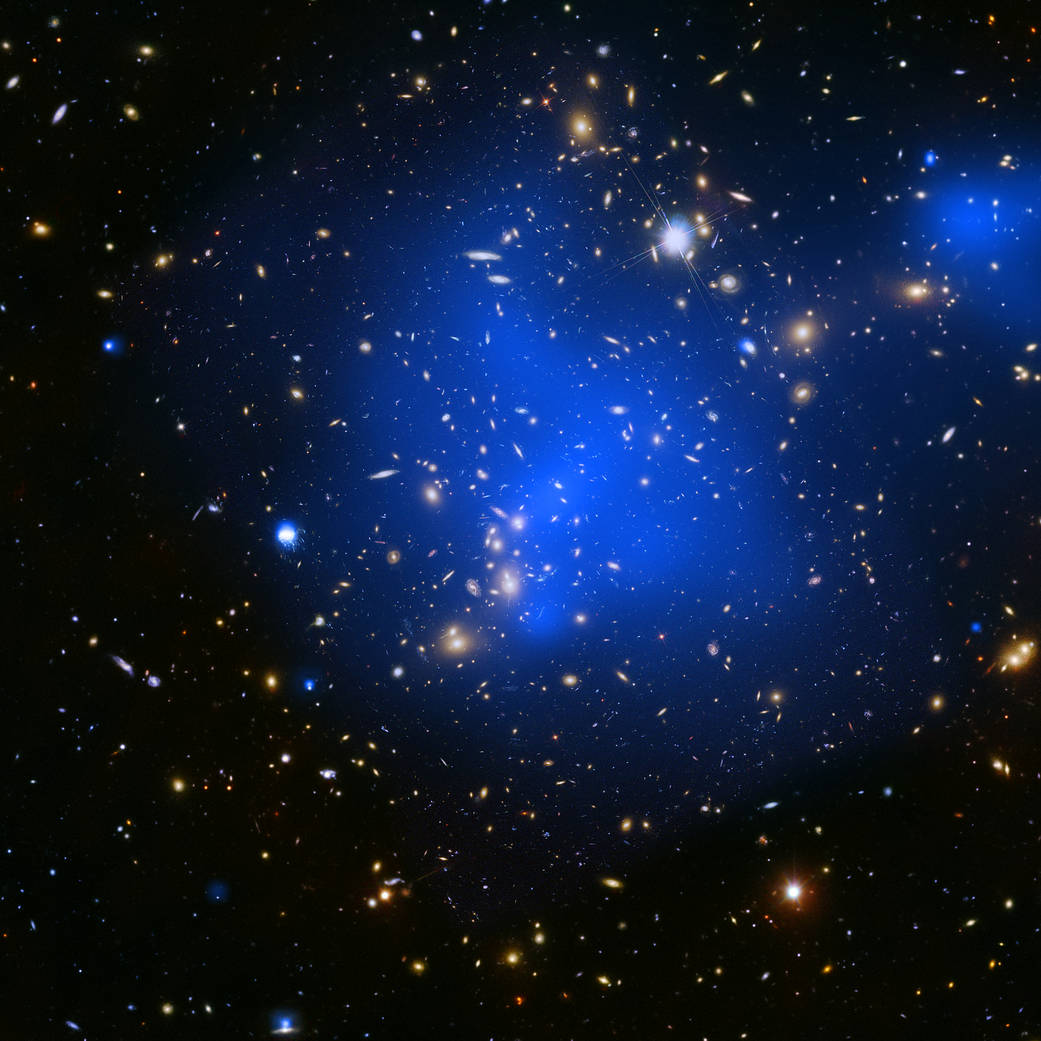Humanity has “eyes” that can detect all different types of light through telescopes around the globe and a fleet of observatories in space. From radio waves to gamma rays, this “multiwavelength” approach to astronomy is crucial to getting a complete understanding of objects in space.
This image is of galaxy cluster Abell 2744. Galaxy clusters are the largest objects in the universe held together by gravity. They contain enormous amounts of superheated gas, with temperatures of tens of millions of degrees, which glows brightly in X-rays, and can be observed across millions of light years between the galaxies. This image combines X-rays from the Chandra X-Ray Observatory (diffuse blue emission) with optical light data from the Hubble Space Telescope (red, green, and blue).
See a selection of images of different kinds of light from various missions and telescopes have been combined to better understand the universe.
Image Credit: NASA/CXC; Optical: NASA/STScI
人类有一双“眼睛”,可以通过世界各地的望远镜和太空天文台探测到各种不同类型的光。从无线电波到伽马射线,这种“多波长”的天文学方法对于全面了解太空中的物体是至关重要的。
这是星系团Abell 2744的照片。星系团是宇宙中通过引力聚集在一起的最大物体。它们含有大量的过热气体,温度高达数千万度,发出明亮的X射线,可以在星系之间数百万光年的距离内观测到。这幅图像结合了钱德拉X射线天文台的X射线(漫射蓝色发射)和哈勃太空望远镜的可见光数据(红、绿、蓝)。
从不同的任务和望远镜中挑选出不同种类的光的图像,以便更好地了解宇宙。
影像来源:NASA/CXC; Optical: NASA/STScI



